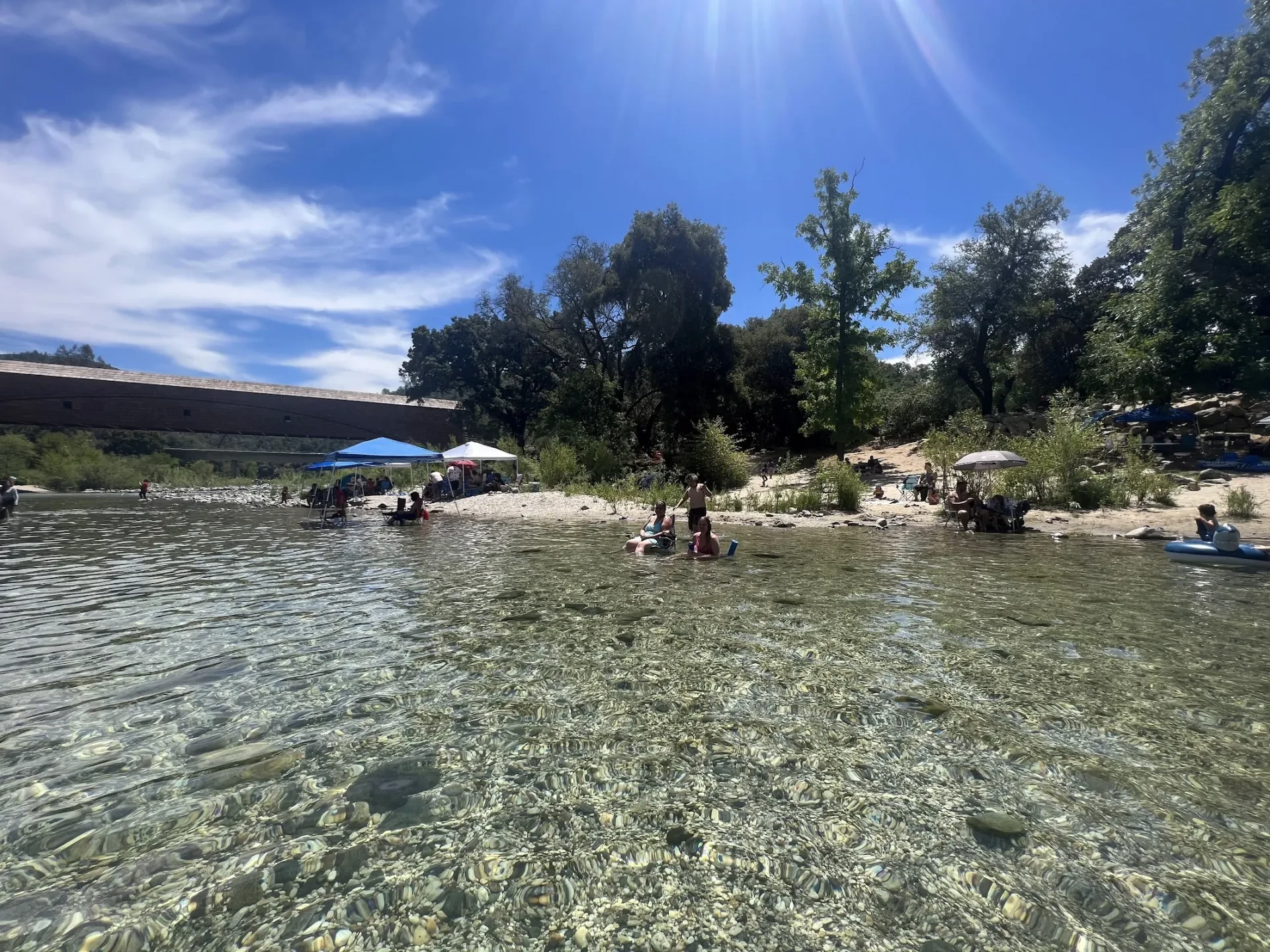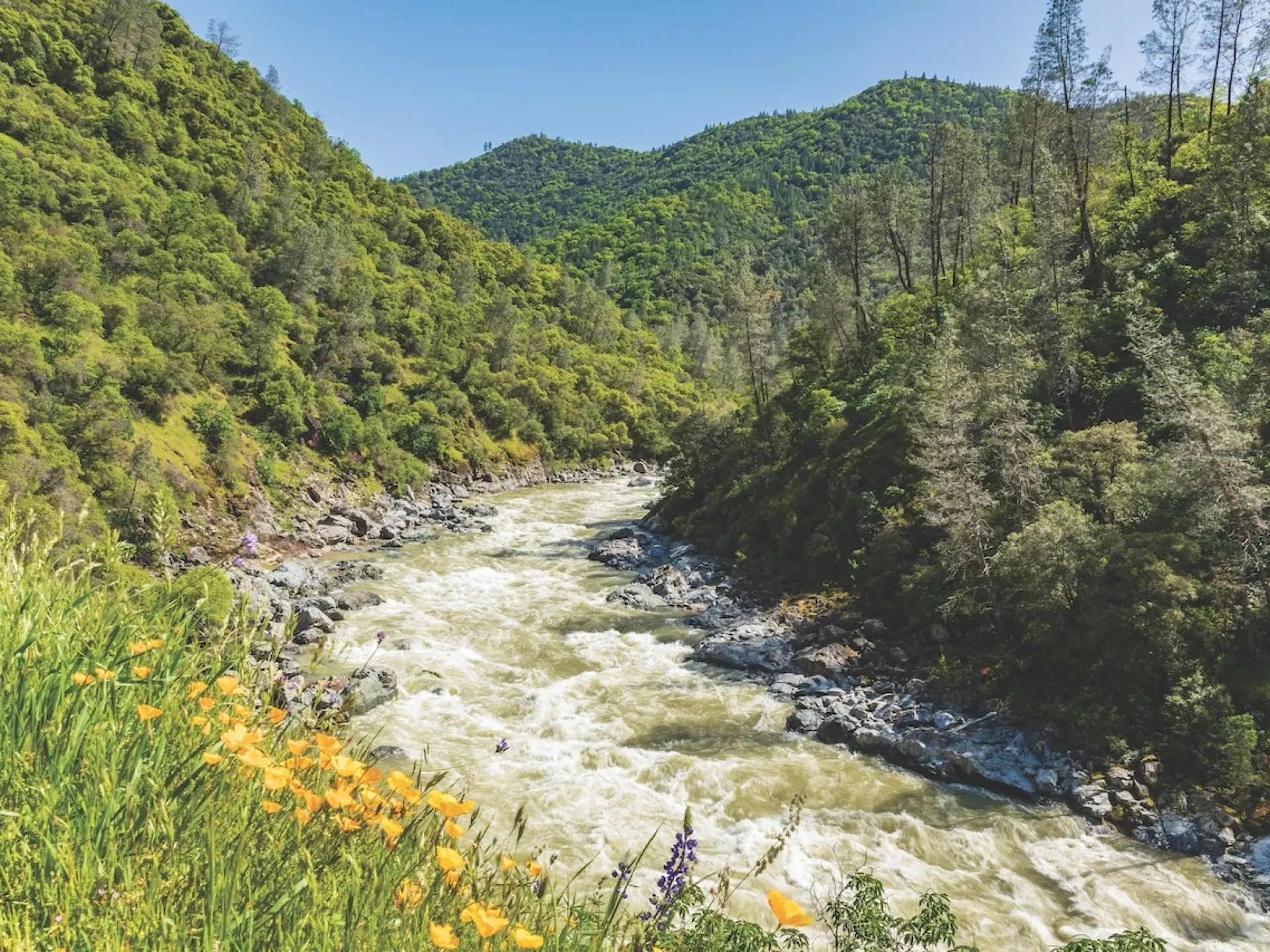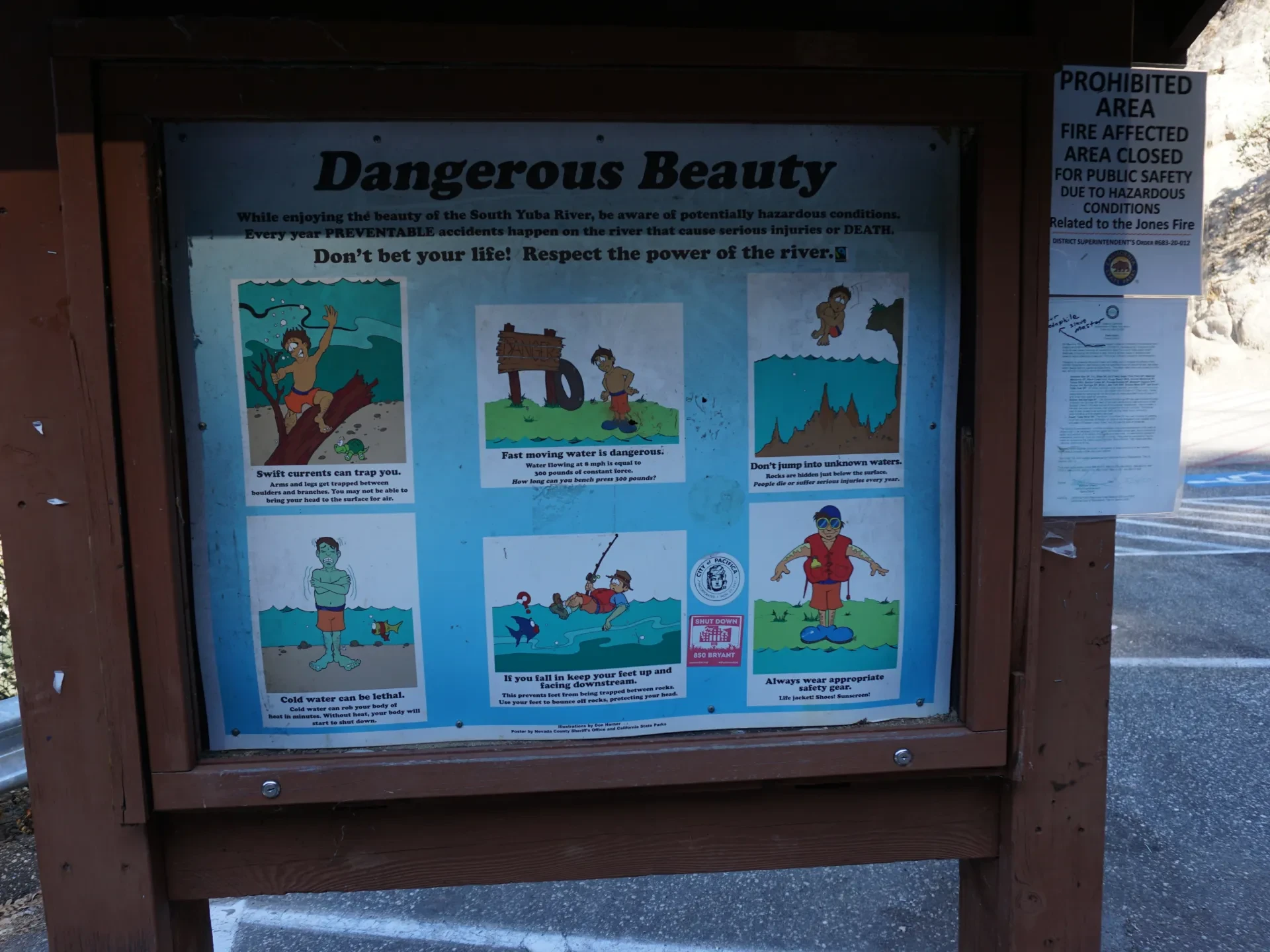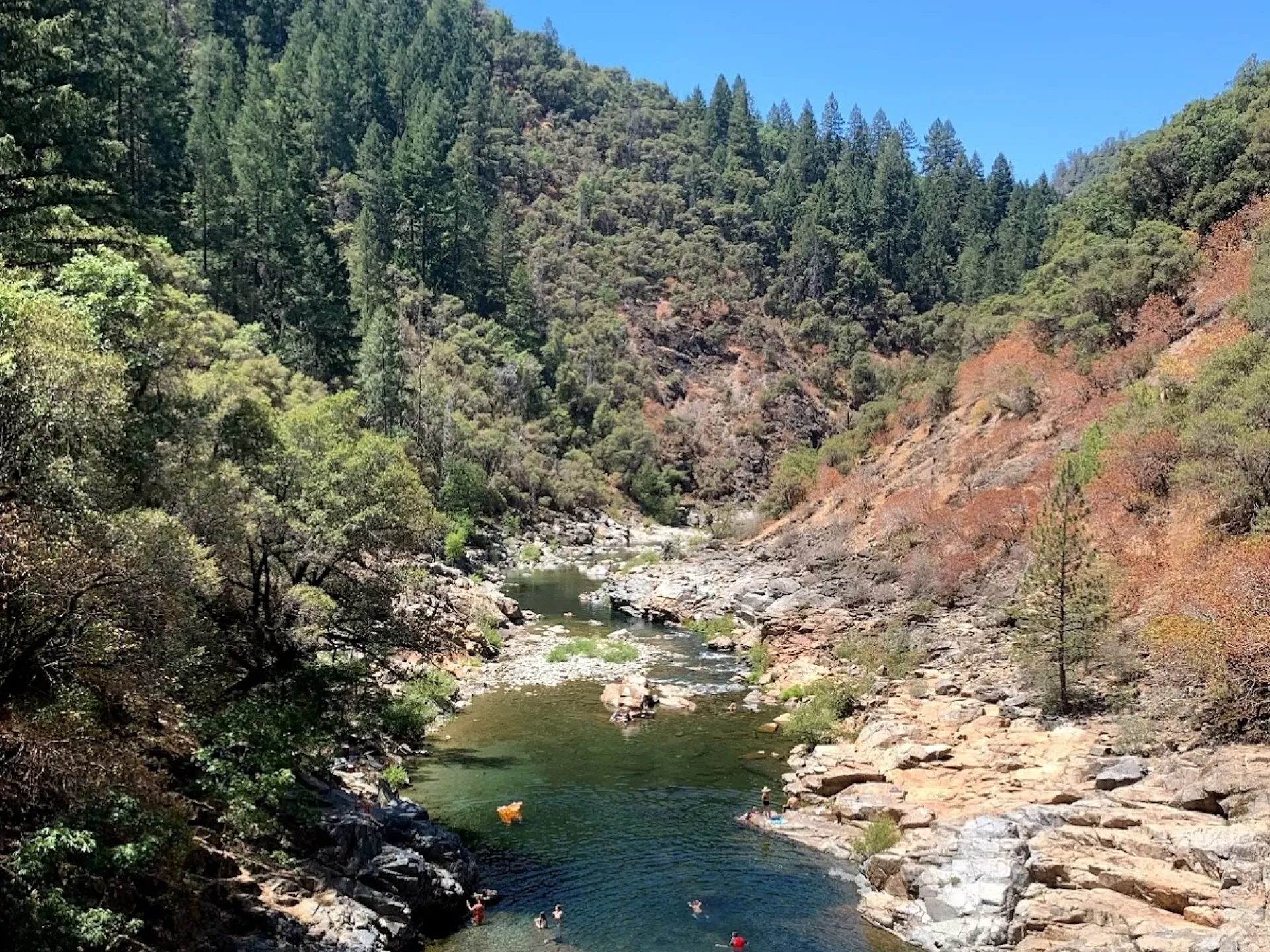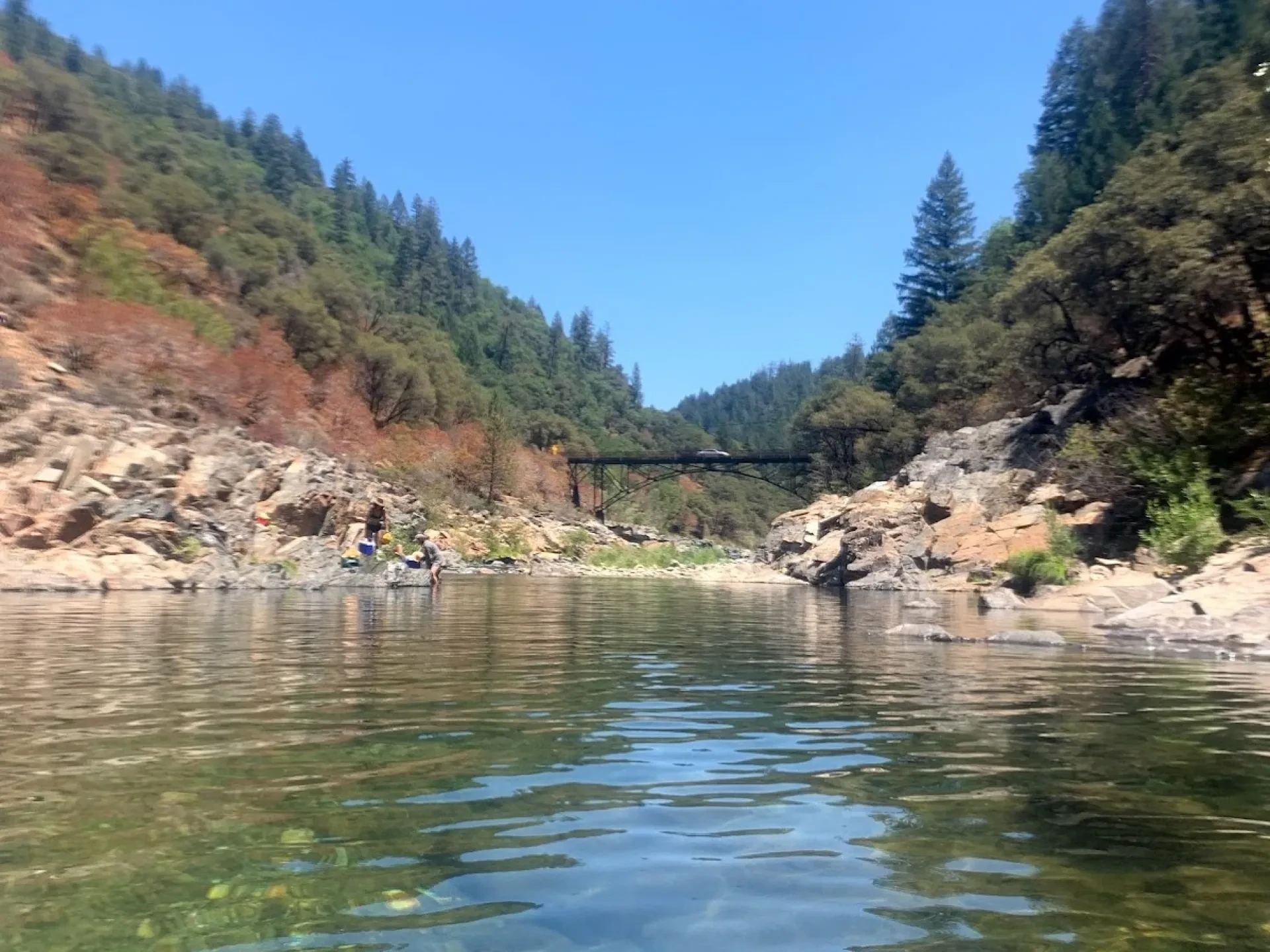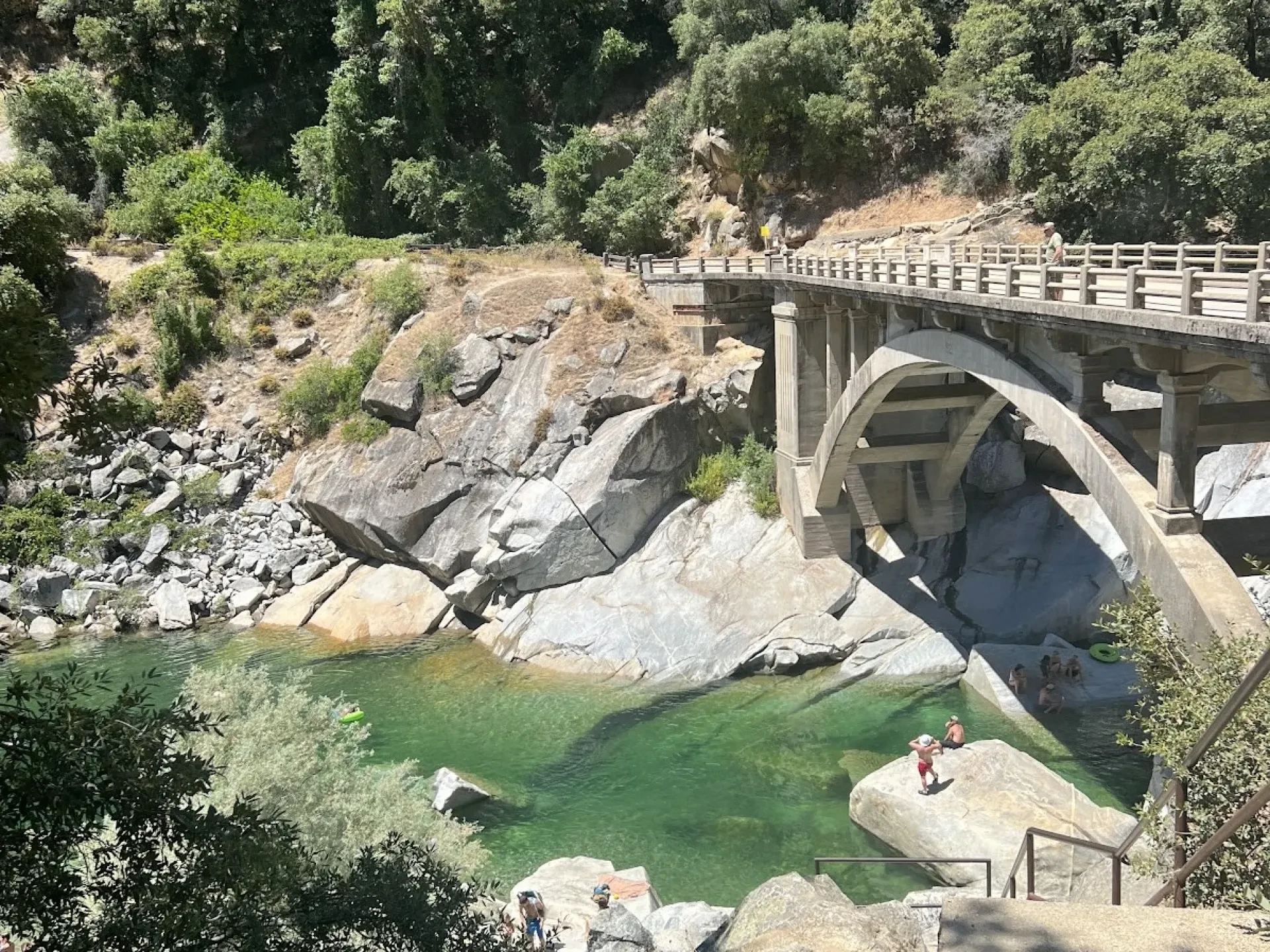If someone were to rank the most picturesque days spent in California, frolicking in turquoise green waters amidst granite canyons at South Yuba River State Park would top many peoples’ lists. That’s why the River Ambassador program run by the South Yuba River Citizen’s League (SYRCL) each summer is so important. Now in its thirteenth season, volunteers in this program speak one-on-one with visitors in English and Spanish about river safety, the realities of waste left behind, the safety hazards caused by illegal parking, and the devastating potential of wildfire. This educational outreach helps ensure that more visitors can recreate safely, feel empowered, and be better stewards of the river so that everyone can enjoy their park experience.
These lessons and tips are relevant to visitors looking to enjoy a summer day safely and responsibly in any waterway in California. All visitors have the responsibility to keep themselves, their community, and the natural environment safe from the inherent risks present in enjoying a wild space. So, whether you’ll be saying hello to a SYRCL River Ambassador this year or are planning to visit a different waterway closer to home, review these tips and do your part to preserve and protect these natural places.
Swim safe
The best way to enjoy a safe day in a river is to research current river conditions and make a plan. Rivers are always changing, and at different times of the year, you might experience changes in river temperature, currents, the amount and speed of water, heat waves, smoky skies, and more. Before you head to a river, look for information on current conditions where you are going, and discuss them with your group.
-
Know before you go: SYRCL’s River Ambassadors field many questions about where it’s safe to swim (especially early in the season), and often share information related to the Stay Out, Stay Alive campaign. At different times of the year, what may have once been a calm beach may be roaring rapids. SYCRL reports that many visitors hear about the Yuba River from social media such as TikTok, which may show videos of rivers filmed in prior years that do not reflect the current conditions of the park. Check for information on current conditions of rivers with the state park or other park service entity that manages the area where you'll be visiting.
-
Stay hydrated and sun-protected: Bring plenty of water and salty or electrolyte-replenishing snacks. Avoid substances like alcohol that may increase dehydration and impair motor skills like swimming. Remote river spots do not have water fountains, so you’ll need to bring all the water you need for the day. Stay safe from the sun by following these guidelines.
-
Bring or borrow a life jacket: As swimming in a river is more challenging than swimming in a pool due to factors such as uneven river floors, obstacles such as rocks, cold river temperatures, and fast-moving currents, life jackets help even strong swimmers conserve energy and stay safe. California State Park’s Division of Boating and Waterways runs a life jacket loaner program that’s available at parks throughout the state. These stations, like the one found at the Bridgeport Crossing section of South Yuba River State Park, allow visitors to borrow life jackets in multiple sizes (from infant to adult) free of cost.
-
Make a safety plan: Many river beaches are found in narrow river canyons, reached by a drive down windy, bumpy, narrow dirt roads. There may not be consistent cell phone coverage. Some river beaches can only be reached by hikes, which can also transverse rugged terrain with hazards such as poison oak, rattlesnakes, steep trails and drop offs, and rocky or slippery soil. Plan ahead of time how you would handle an emergency situation where first responders may not be able to access your location easily, consider bringing a wilderness first aid kit, and make sure your plan for the day is achievable for the skill and comfort level of all in your party.
Picnic responsibly – for you and for the river
People flock to wild and scenic places to enjoy the pristine beauty found there, yet oftentimes those same people leave behind waste that reduces that same natural beauty they came to enjoy. During summer 2023, SYRCL’s River Ambassadors removed more than 3,500 pieces of garbage and 519 pieces of recycling during the summer season, and another 12,364 pounds of trash and recycling during a September clean up event. We all have a responsibility to preserve the beauty of these places and leave them better than we found them. The great news is that recreating in a way that’s responsible for the river and the surrounding ecosystem is also respectful of the broader community and helps keep us all safe. The Leave No Trace principles, especially the principle for disposing of waste properly, give great instructions to follow, such as:
-
Bring less trash - it's less to carry home: Pack food, water and other items you bring in reusable packaging. This not only reduces the trash you produce, but it helps prevent microplastics (like plastic wrapper shards or Styrofoam pieces from single-use coolers or cups) from entering the ecosystem. Pack out any trash you do generate, including food waste. Garbage cans or dumpsters are often only located near parking lots or established picnic areas (if those are available), and large influxes of visitors can create enough garbage to quickly overwhelm the amount of dumpster space available. If trash cans are full, bring your trash home with you.
-
Bring prepared food: The South Yuba River, like many rivers across the state, runs through areas at high risk of wildfire. Cooking with grills (both gas and charcoal) can increase the chances of starting a wildfire. Be sure to leave these items at home, and instead pack your favorite premade dish.
-
Eat crumb clean: Although you may be able to compost food waste at home, an orange peel thrown on the ground or crumbs left on a beach won’t decompose in the same way. It’s more likely that these food items will get eaten by an animal, disrupting that animal’s normal eating habits and causing a larger impact to the ecosystem. Pack out any food waste with you, consider using a tablecloth or blanket to catch crumbs, and bring food that’s not likely to make a mess.
-
Make a bathroom plan: Yes, this is waste too! Confirm if bathrooms are available or not at the river location you plan to visit. If bathrooms are not available, leave no trace principle #3 discusses what to do when near water.
Consider your crew:
The secret is out — California's rivers are the place to be this summer! With over 800,000 visitors making the trek to South Yuba River State Park alone each year, you’ll likely be sharing space with others during your time at a river. Whether you’re enjoying the river with a large group or only your furry friend, here are other considerations to be a good neighbor to all in the space:
-
Carpool wherever possible and arrive early to increase your chance of getting a parking spot. This summer, River Ambassadors with SYRCL confirmed parking lots at their two main stations filled by 10:30 AM every weekend day. Park only in designated areas to avoid blocking emergency vehicles should they need to arrive.
-
Confirm that dogs are allowed at the river you want to visit and review any special instructions you may have to follow. At South Yuba River State Park, dogs are allowed on trails and shorelines except for at the area known as Family Beach (starting from the covered bridge at Bridgeport and continuing 200 feet downstream on both sides of the river.) Be sure to bring enough food and water for your pet too!
-
Review swim safety guidelines with children and always supervise children while they swim.
California State Parks Foundation is proud to support the community-building and educational outreach work done by the South Yuba River Citizen’s League. Learn more about the many ways you can help protect and preserve the California state park system for the benefit of all.
Sources:
